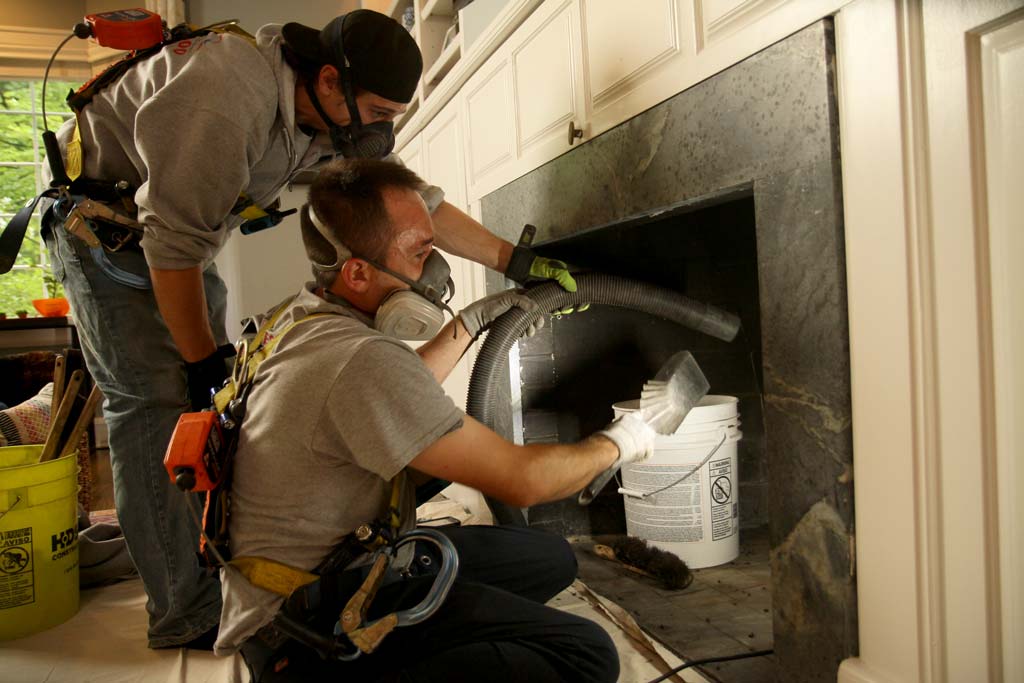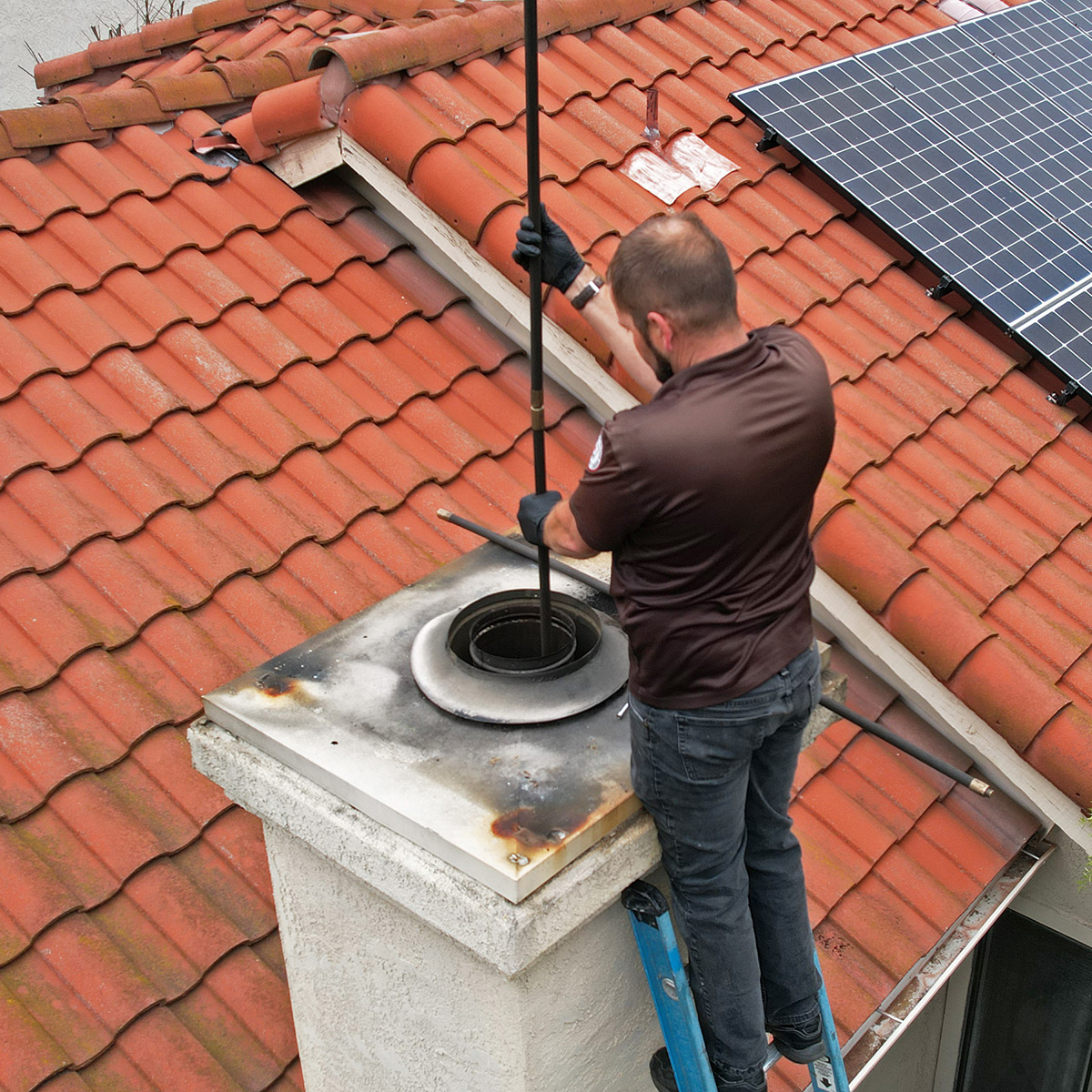Smokeshaft Cleansing: A Step-by-Step Overview to Preserving a Healthy And Balanced Fire Place
Routine chimney cleansing is an essential part of this upkeep routine. By adhering to these standards, you will certainly learn just how to collect the required devices, do an aesthetic evaluation, clear debris and build-up, move the smokeshaft, and finish the last actions for ongoing maintenance.
Gathering the Required Devices
To start the procedure of chimney cleaning, the first action is to collect all the necessary tools. Having the right devices available makes certain a reliable and risk-free cleansing process. The crucial devices for smokeshaft cleaning consist of a chimney brush, a ladder, ground cloth or plastic sheets, a flashlight, gloves, and a dirt mask.
The smokeshaft brush is the primary tool used to get rid of residue and creosote accumulation from the flue. It is essential to choose a brush that matches the shapes and size of your chimney. In addition, a strong ladder is essential to access the smokeshaft securely. Make sure the ladder is stable and positioned on a flat surface area.
A flashlight is essential for examining the smokeshaft's interior for any kind of indications of damages or blockages. Gloves are required to secure your hands from residue and various other damaging materials, while a dirt mask aids prevent the inhalation of particles.
Carrying Out an Aesthetic Assessment

Making use of a flashlight, thoroughly take a look at the indoor wall surfaces of the smokeshaft for any type of signs of damages, such as splits, loose bricks, or mortar wear and tear. These issues can endanger the smokeshaft's architectural honesty and posture a significant security threat. In addition, check for any signs of water damage, such as discoloration or efflorescence, as this can suggest a leaky smokeshaft cap or flashing.
Next, examine the smokeshaft flue for any kind of blockages. Seek the visibility of nesting materials, leaves, or particles that might have built up with time (Chimney Clean San Jose). These obstructions can limit air movement, boost the danger of carbon monoxide gas accumulation, and hinder the smokeshaft's capability to successfully air vent smoke
Throughout the visual evaluation, pay very close attention to the smokeshaft crown, which is the leading surface area that safeguards the chimney from wetness. Try to find cracks or missing pieces in the crown, as these can permit water to enter the chimney and cause considerable damage.
Clearing Up Particles and Accumulation
After completing the visual inspection, the next step in smokeshaft cleaning entails cleaning debris and build-up to guarantee the proper performance of the fireplace. With time, debris such as leaves, twigs, and pet nests can gather in the smokeshaft, obstructing the circulation of air and creating prospective fire threats. In addition, the buildup of creosote, a tar-like compound, is a typical issue in chimneys. Creosote is created when wood or fossil gas are burned, and otherwise removed regularly, it can result in chimney fires.
To get rid of particles and accumulation, it is essential to make use of the right devices and methods. A chimney brush, particularly made for this purpose, is made use of to remove loosened particles and creosote from the smokeshaft wall surfaces. It is necessary to select a brush that matches the dimension of your chimney to ensure efficient cleansing. Prior to starting the cleansing procedure, make certain to cover the fireplace open up to stop particles from coming under the area.
To begin, place the brush into the chimney and move it up and down, scrubbing the wall surfaces to remove any kind of particles or creosote. When the brushing is full, utilize a vacuum cleanser or a smokeshaft brush extension to get rid of the dislodged particles from the fireplace.

Brushing Up the Smokeshaft
The sweeping of the smokeshaft is a crucial action in keeping a healthy fireplace. Gradually, soot, creosote, and other particles can accumulate in the smokeshaft, obstructing the circulation of air and potentially triggering a harmful buildup of flammable materials. Normal chimney sweeper not only ensures proper air flow however likewise avoids the danger of smokeshaft fires.
When it comes to chimney sweeping, it is highly recommended to work with a specialist chimney sweep. These professionals have Visit Website the knowledge and tools essential to securely and properly eliminate the accumulated particles from your smokeshaft.
It is essential to note that the regularity of smokeshaft sweeping relies on numerous aspects, such as the kind of gas made use of, the quantity of use, and the kind of chimney. As a basic guideline of thumb, it is advised to have your smokeshaft swept and inspected at the very least annually.
Last Actions and Maintenance
To guarantee recurring maintenance and ideal performance, it is necessary to carry out routine upkeep practices and comply with a detailed collection of last steps for your fire place. After finishing the smokeshaft sweeping process, the very first step in the last maintenance is to check the smokeshaft cap and trigger arrestor. These elements stop debris, animals, and rainwater from entering the smokeshaft. Look for any type of indications of damage or blockage, and clean or repair them if essential.

Check the within of the fireplace for any kind of indicators of deterioration, such as fractures, loosened blocks, or harmed mortar. These concerns can impact the architectural stability and safety of the fireplace. If any type of troubles are detected, get in touch with an expert chimney move or mason to resolve them quickly.
Lastly, visit the website take into consideration setting up carbon monoxide gas detectors near the fireplace and throughout your home. These devices can identify the existence of this unsafe gas, supplying a very early warning system in situation of a smokeshaft malfunction. On a regular basis inspect and replace the batteries in these detectors to ensure their efficiency.
Conclusion
In conclusion, complying with a detailed overview for smokeshaft cleansing is essential in maintaining a healthy fire place. By gathering the necessary devices, doing an aesthetic inspection, removing debris and accumulation, and sweeping the smokeshaft, homeowners can ensure the safety and effectiveness of their fire place.
The essential tools for chimney cleaning consist of a smokeshaft brush, a ladder, decrease towels or plastic sheets, a flashlight, gloves, and a dirt mask.
A smokeshaft brush, specifically created for this objective, is made use of to eliminate loosened debris and creosote from the smokeshaft wall surfaces. Routine smokeshaft sweeping not just makes certain appropriate air flow yet likewise avoids the threat of chimney fires.
When it comes to smokeshaft sweeping, it is extremely recommended to hire an expert chimney move. After completing the smokeshaft sweeping process, the first action in the last upkeep is to inspect the chimney cap and stimulate arrestor.